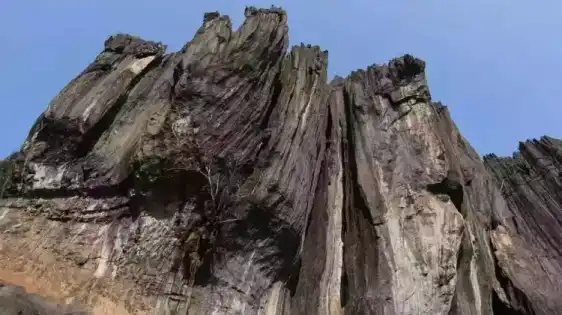Exploring the Rich Heritage and Natural Splendor of Uttara Kannada District
Introduction
Uttara Kannada, a district in the southern Indian state of Karnataka, is a treasure trove of history, culture, and natural beauty. With its stunning landscapes, vibrant cultural heritage, and significant historical sites, Uttara Kannada offers a unique blend of experiences for travelers and researchers alike. This article delves into the various facets of Uttara Kannada, including its geography, demography, culture, cuisines, historical significance, notable poets and authors, and administrative structure.
Geography and Natural Beauty
Uttara Kannada is located along the Arabian Sea coast and is bordered by the Western Ghats, creating a diverse and picturesque landscape. The district spans an area of approximately 10,291 square kilometers and is characterized by its varied topography, including coastal plains, rugged hills, and dense forests. The major rivers flowing through the district include the Kali, Gangavali, Aghanashini, and Sharavati, which contribute to the region's rich biodiversity.
Coastal Areas
The coastal belt of Uttara Kannada is dotted with pristine beaches such as Gokarna, Om Beach, and Karwar Beach. These beaches are not only popular tourist destinations but also play a crucial role in the local economy through fishing and tourism.
Western Ghats
The Western Ghats, a UNESCO World Heritage Site, run parallel to the coastline and are home to several wildlife sanctuaries and national parks, including the Anshi National Park and Dandeli Wildlife Sanctuary. These protected areas harbor a wide range of flora and fauna, making Uttara Kannada a biodiversity hotspot.
Demography
According to the 2011 Census, Uttara Kannada has a population of approximately 1.43 million people. The district is a melting pot of various communities, including Hindus, Muslims, Christians, and Jains, reflecting a rich tapestry of cultural diversity.
Language
Kannada is the predominant language spoken in Uttara Kannada, although Konkani, Marathi, and Urdu are also widely used due to the district's proximity to Goa and Maharashtra.
Education
Uttara Kannada boasts a high literacy rate, with numerous educational institutions providing quality education. Prominent colleges and universities in the district include the Karnatak University Campus in Karwar and the Government Engineering College in Karwar.
Cultural Heritage
Uttara Kannada is renowned for its vibrant cultural traditions, which are deeply rooted in its history and geography. The district celebrates a multitude of festivals, and its arts and crafts reflect the region's rich cultural heritage.
Festivals
Major festivals celebrated in Uttara Kannada include Diwali, Dussehra, Eid, and Christmas. Additionally, the district hosts unique local festivals such as the Karavali Utsav and the Hunnime Habba, which showcase traditional music, dance, and cuisine.
Arts and Crafts
The district is famous for its intricate handicrafts, including sandalwood carvings, Yakshagana masks, and Gokak toys. These crafts are not only popular among tourists but also contribute significantly to the local economy.
Cuisines
Uttara Kannada's cuisine is a delightful blend of coastal and inland culinary traditions. The food here is known for its use of fresh, locally sourced ingredients, and a variety of spices.
Coastal Cuisine
Seafood forms the backbone of coastal cuisine in Uttara Kannada. Popular dishes include fish curry, prawn fry, and crab masala, often accompanied by rice or neer dosa.
Inland Cuisine
Inland areas of Uttara Kannada are known for their vegetarian delicacies such as Jolada Roti (sorghum flatbread), Ennegai (stuffed eggplant), and a variety of lentil-based dishes.
Historical Significance
Uttara Kannada has a rich historical legacy that dates back to ancient times. The district has been ruled by various dynasties, including the Kadambas, Chalukyas, and Vijayanagara Empire, each leaving its mark on the region's history and architecture.
Ancient Temples
The district is home to numerous ancient temples, such as the Mahabaleshwar Temple in Gokarna, which is an important pilgrimage site. The Murudeshwar Temple, with its towering statue of Lord Shiva, is another significant religious site attracting devotees from all over the country.
Colonial Heritage
Karwar, the district headquarters, has a fascinating colonial history. It was a prominent port during British rule, and several colonial-era buildings and churches can still be seen in the town.
Notable Poets and Authors
Uttara Kannada has produced several eminent poets and authors who have made significant contributions to Kannada literature.
Dinakara Desai
Dinakara Desai, a renowned poet and writer from Uttara Kannada, is known for his poignant poetry and plays that often reflect the socio-political issues of his time. His works are celebrated for their lyrical quality and depth of emotion.
Shankar Mokashi Punekar
Shankar Mokashi Punekar, another prominent literary figure from the district, is acclaimed for his novels and short stories that depict the life and culture of rural Karnataka. His writings offer a vivid portrayal of the district's traditions and ethos.
Administration
The administrative structure of Uttara Kannada is well-organized, with the district divided into several taluks (sub-districts) for efficient governance.
Taluks
Uttara Kannada comprises 11 taluks: Karwar, Ankola, Kumta, Honnavar, Sirsi, Siddapur, Yellapur, Mundgod, Haliyal, Joida, and Bhatkal. Each taluk has its own administrative setup to manage local affairs and development projects.
District Administration
The district administration is headed by the Deputy Commissioner (DC), who oversees various departments such as revenue, police, education, and health. The DC is supported by Assistant Commissioners, Tahsildars, and other officials to ensure smooth functioning of the district's administrative machinery.
Conclusion
Uttara Kannada is a district of immense cultural and natural significance. Its breathtaking landscapes, rich history, diverse culture, and delectable cuisine make it a unique destination for travelers and scholars. The district's well-preserved heritage, coupled with its vibrant contemporary culture, offers a fascinating blend of the old and the new. Exploring Uttara Kannada is a journey through time, where each corner of the district tells a story of its glorious past and promising future.
